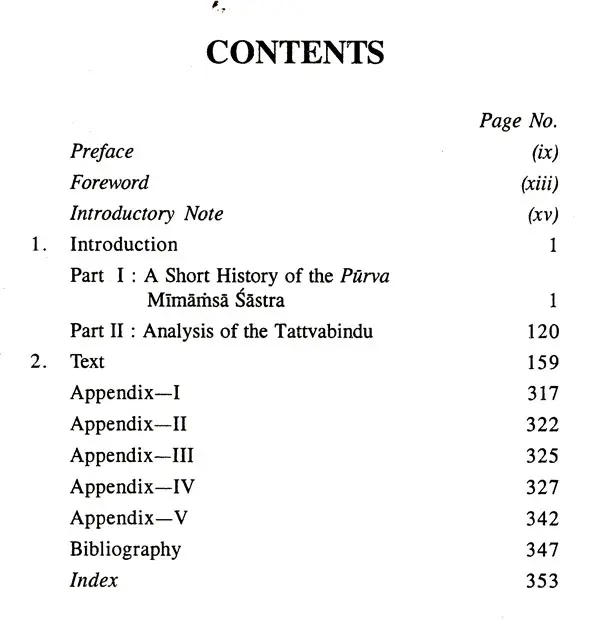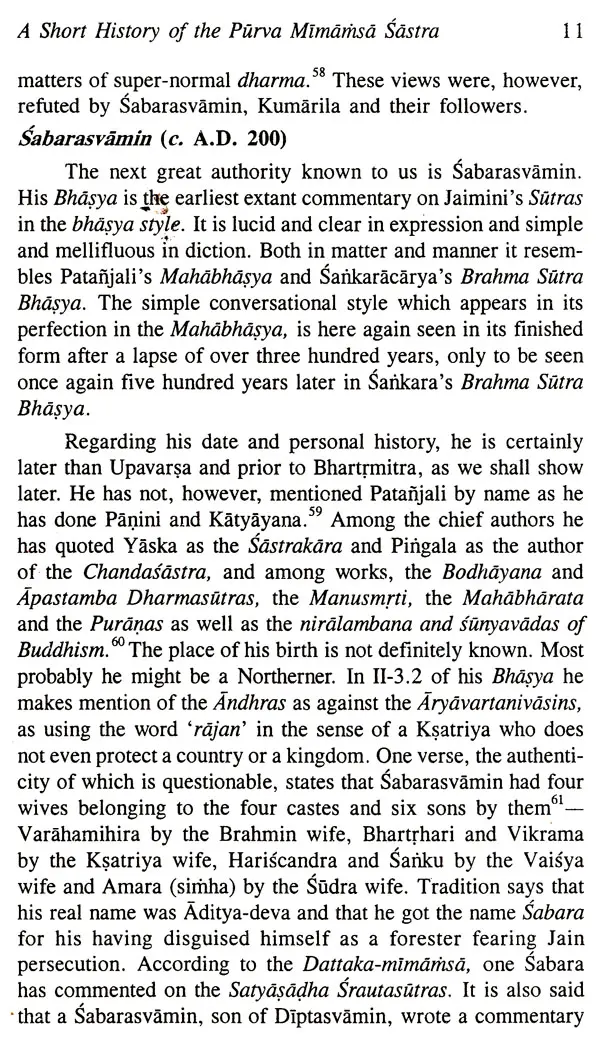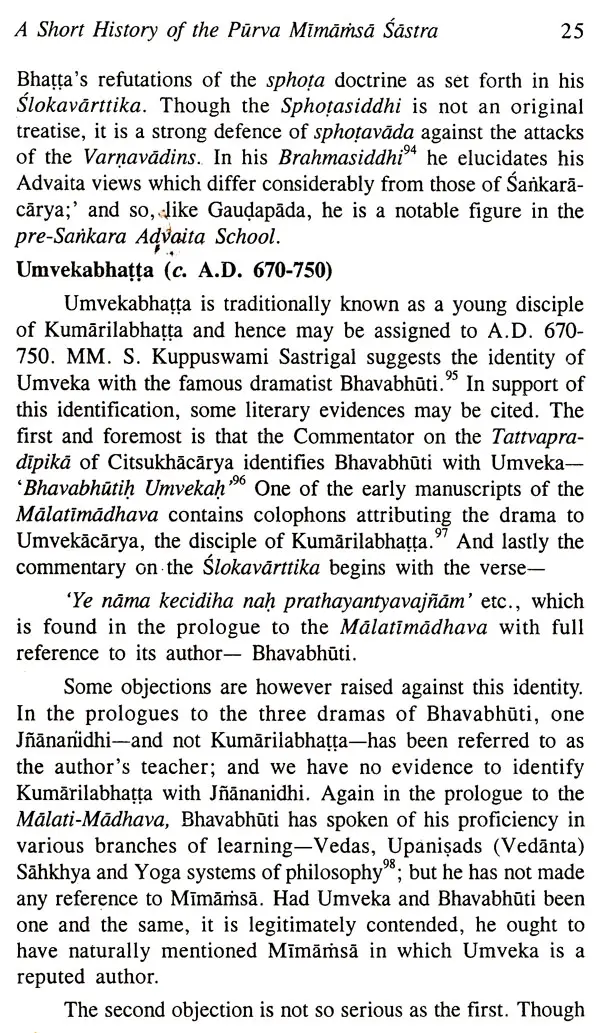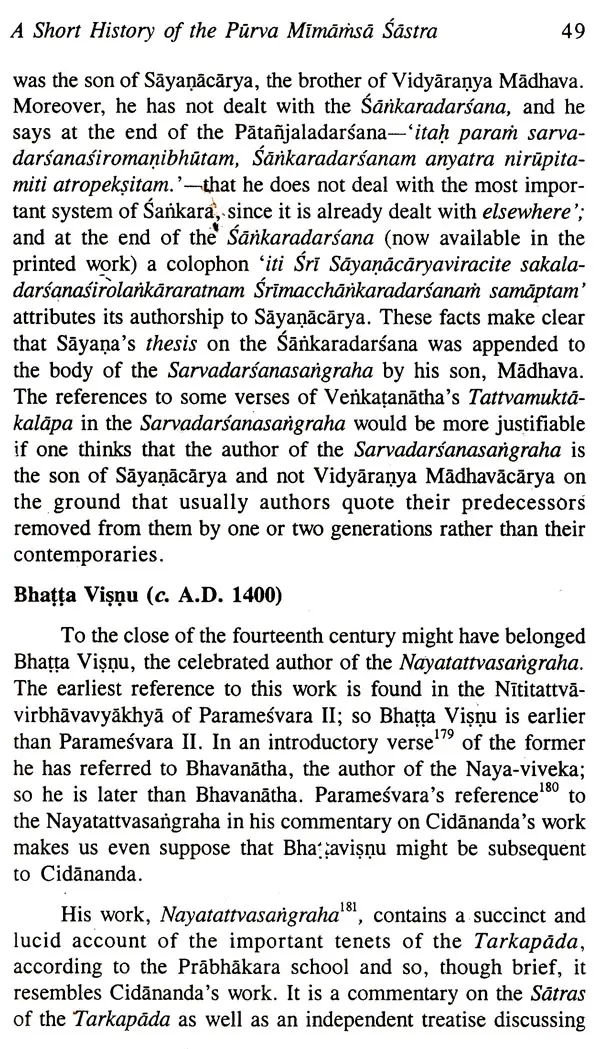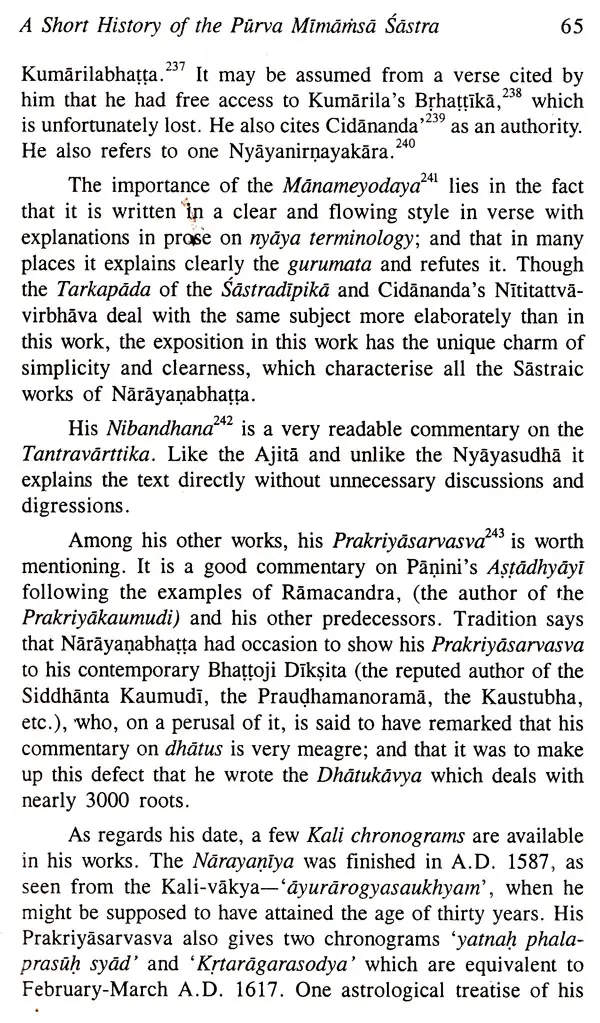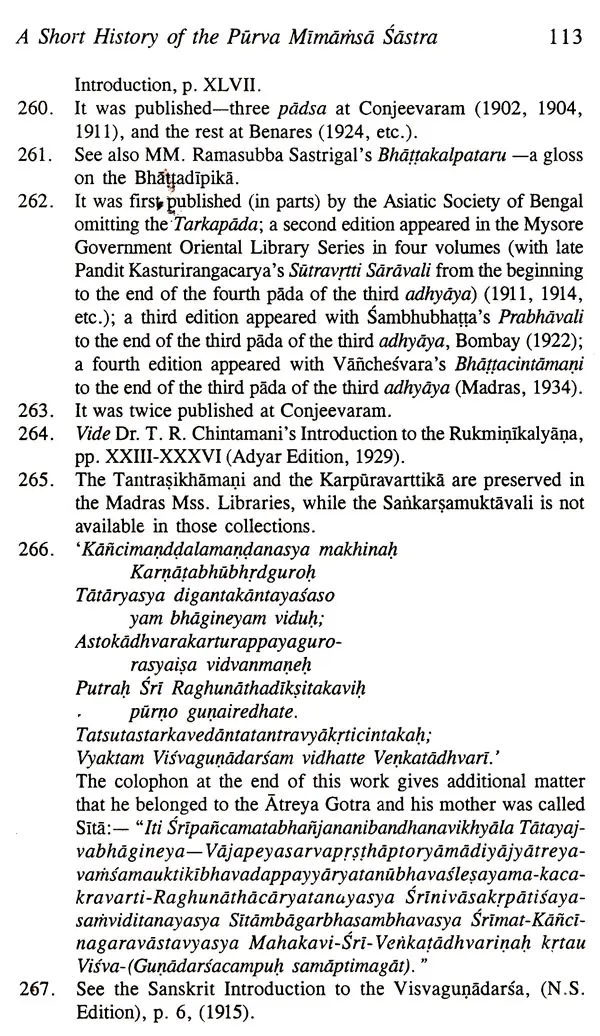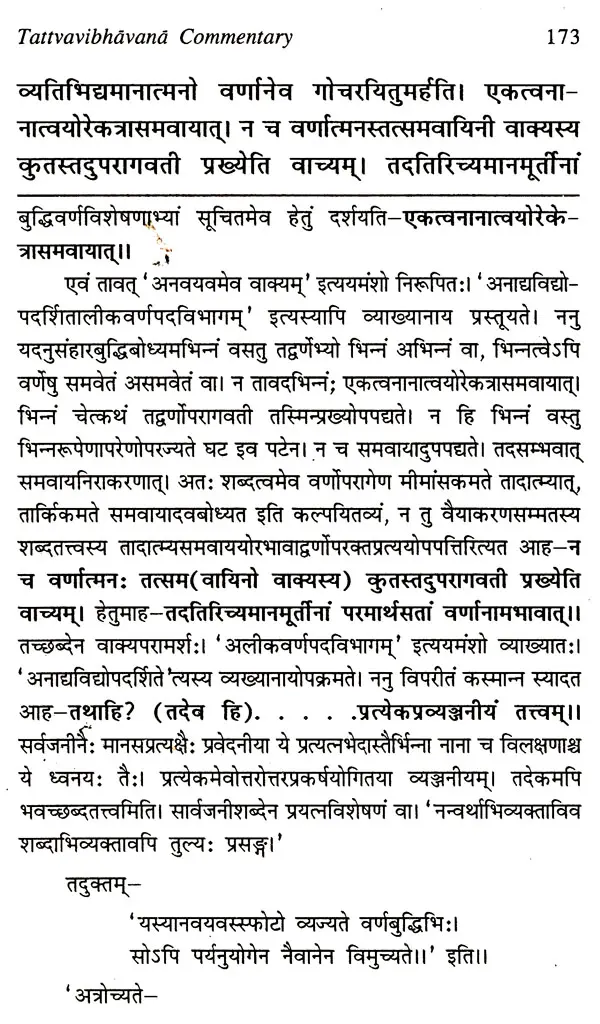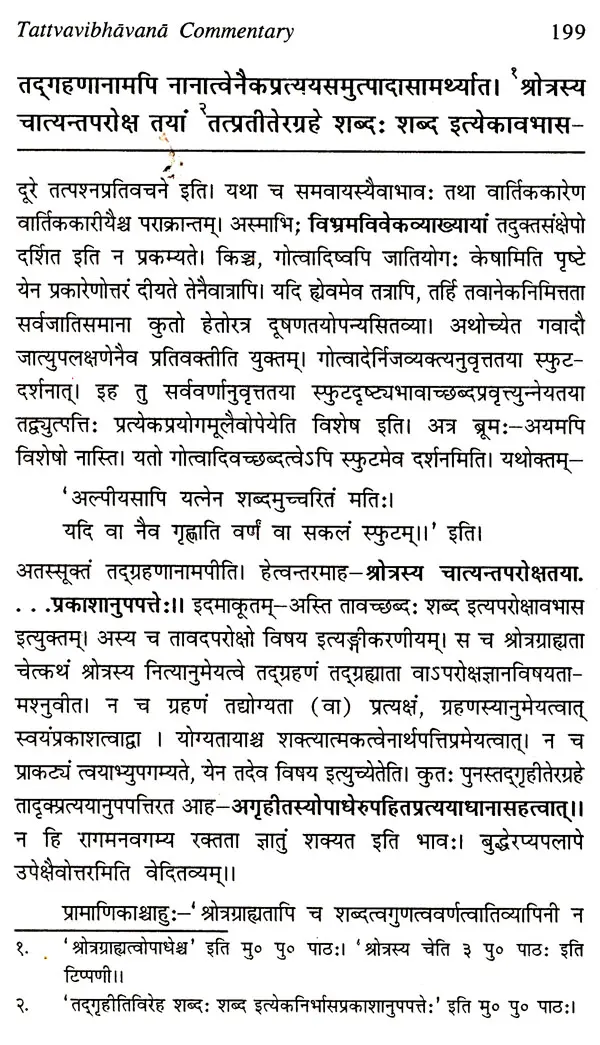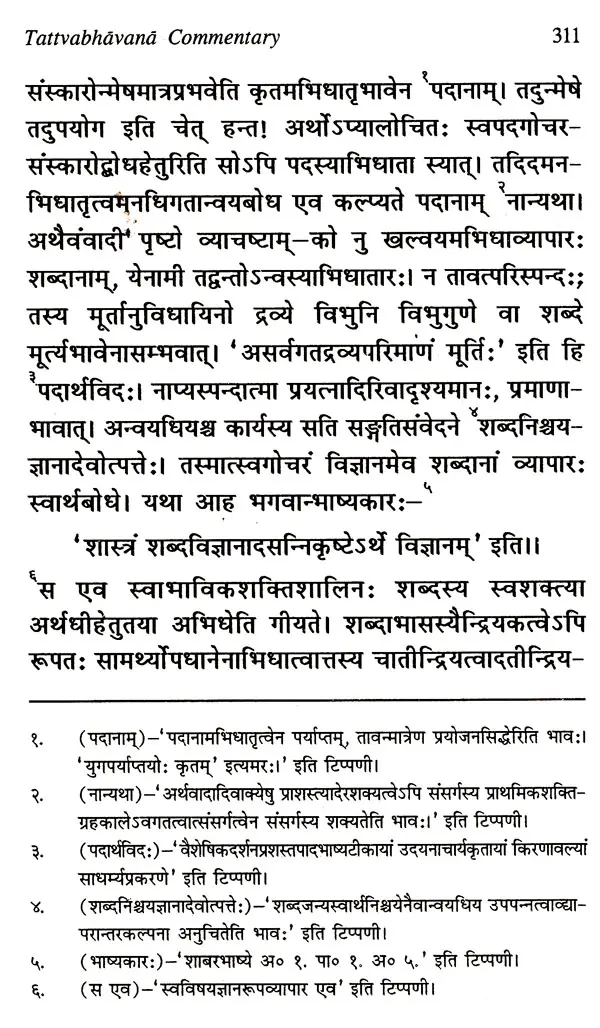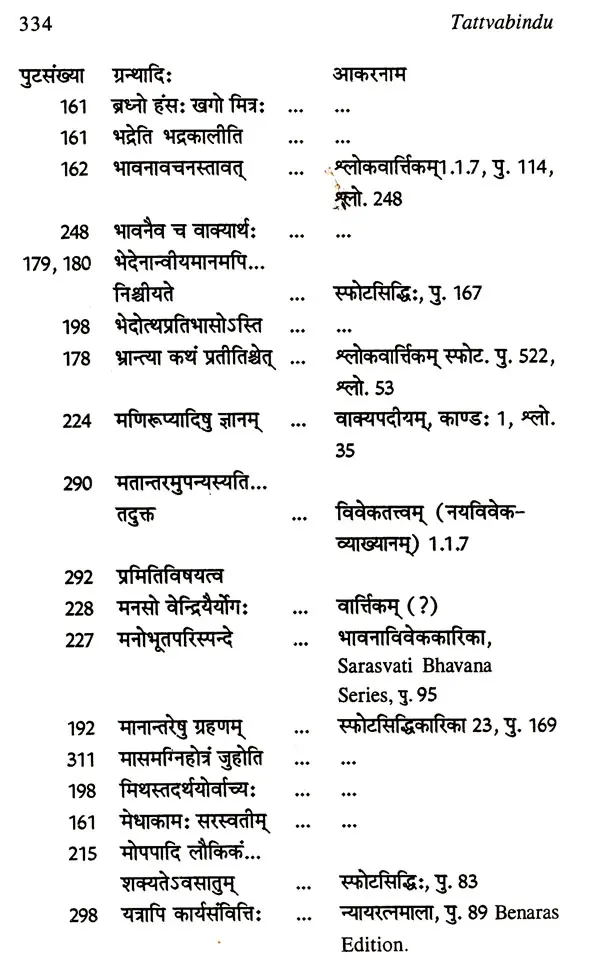
तत्त्वबिन्दुः: Tattvabindu By Vacaspatimisra with Tattvavibhavana
Book Specification
| Item Code: | UAO015 |
| Author: | V. A. Ramaswami Sastri |
| Publisher: | Bharatiya Kala Prakashan |
| Language: | English & Sanskrit |
| Edition: | 2009 |
| ISBN: | 9788180902161 |
| Pages: | 372 |
| Cover: | HARDCOVER |
| Other Details | 8.80 X 5.80 inch |
| Weight | 600 gm |
Book Description
This edition of Vacaspatimisra's Tattvabindu and of its commentary Tattvavibhāvana by Parameśvara II is based on (1) a transcript of a manuscript Tattvavibhavana preserved in the Madras Government Oriental Manuscripts Library, and (2) the Benares Edition of the Tattvabindu. Since the commentator has made it a rule to quote the full text by parts before commenting on it.
Vacaspatimisra's Tattvabindu is a short and highly difficult text. In his characteristically rhythmic and stately diction, Vacaspatimiśra reviews in the Tattvabindu, the Vaiyakarana doctrine of Sphota, mainly as expounded by Bhartṛhari and Mandanamiśra, and amplifies and reaffirms Kumarila's criticism of Sphota doctrine.
The elaborate and scholarly intro duction, giving a historical sketch of the Mimansa literature, and the thorough going analysis of the Tattvabindu, in English, which the learned editor has prefixed to his edition of the work.
Mr. V.A. Ramaswami Sastri has rendered a highly valu able service to Sanskrit scholars who are interested in the study of advanced Sastraic texts in the original, by bringing out a very reliable edition of Vacaspatimiśra's Tattvabindu, together with the commentary called Tattvavibhavana by Parameśvara II, of the Kerala country. Vacaspatimiśra belongs to the middle of the ninth century A.D. and Parameśvara II flourished in the Porkulam village of Kunnankulam, near Guruvayur, in the Cochin State, in the former half of the fifteenth century A.D.
Vacaspatimisra's Tattvabindu is a short and highly diffi cult text. In his characteristically rhythmic and stately diction, Vácaspatimiśra reviews in the Tattvabindu, the Vaiyakarana doctrine of Sphota, mainly as expounded by Bhartṛhari and Mandanamiśra, and amplifies and reaffirms Kumārila's criti cism of Sphota doctrine. Bharthari and Mandana in their ex position of the sphota doctrine worked out fully the onto-logi cal implication involved in what may be described, in terms of modern psychology, as a Gestalt view of the experience relat ing to the complete and self-contained significative unit, called sentence (väkya), by establishing the doctrine of abdadvaita and reconciling it with the Upanisadic doctrine of Brahma dvaita. The substantival pluralism of the Mimamsakas, both of the schools of Kumarila and Prabhakara, set its face against all kinds of Advaitism and was opposed to Bharthari's Sabda dvaita. Though Vacaspatimiśra was one of the greatest Advaitins and was dominated, in a large measure, by the spirit of philosophical accommodation which characterised Mandana's great Advaitic classic-Brahmasiddhi, he chose to maintain, in his Tattvabindu, the attitude which Kumarila adopted towards the doctrine of Sphota in his Slokavárttika. The Commentary-Tattvavibhavana-which is incorporated in this edition, is lucid and very helpful in understanding the text of Vacaspatimiśra. Though this commentary is gener ally reliable, it must be said that the learned commentator nods in some places. For instance, the commentator has adopted a defective reading-पट्वभ्यासाहिता हि भावना प्रबोधवती स्मृतिः संगीयते", and he has entirely missed the meaning of the technical terms used in this text. By the way it may be observed that the correct reading of this text is :- “पट्वभ्यासादरप्रत्ययाहिता हि भावना प्रबोधवती fe:" as given in the footnote; and that this text refers to the three types of cognitions which are capable of being reproduced in memory-viz., पटुप्रत्यय, अभ्यासप्रत्यय and आदरप्रत्यय and which Prasastapada describes in his Padarthadharmasangraha in the Samskara section of the gunagrantha.
The elaborate and scholarly introduction, giving a his torical sketch of the Mimamsă literature, and the thorough going analysis of the Tattvabindu, in English, which the learned editor has prefixed to his edition of the work, greatly enhance the value of this edition as an important book of reference. I heartily congratulate Mr. Ramaswami Sastri on this substan tial and scholarly contribution, which he has made, in his edition of the Tattvabindu, to the printed Sastra literature in Samskrit and to the study of Indian Philosophy in general.
**Contents and Sample Pages**

